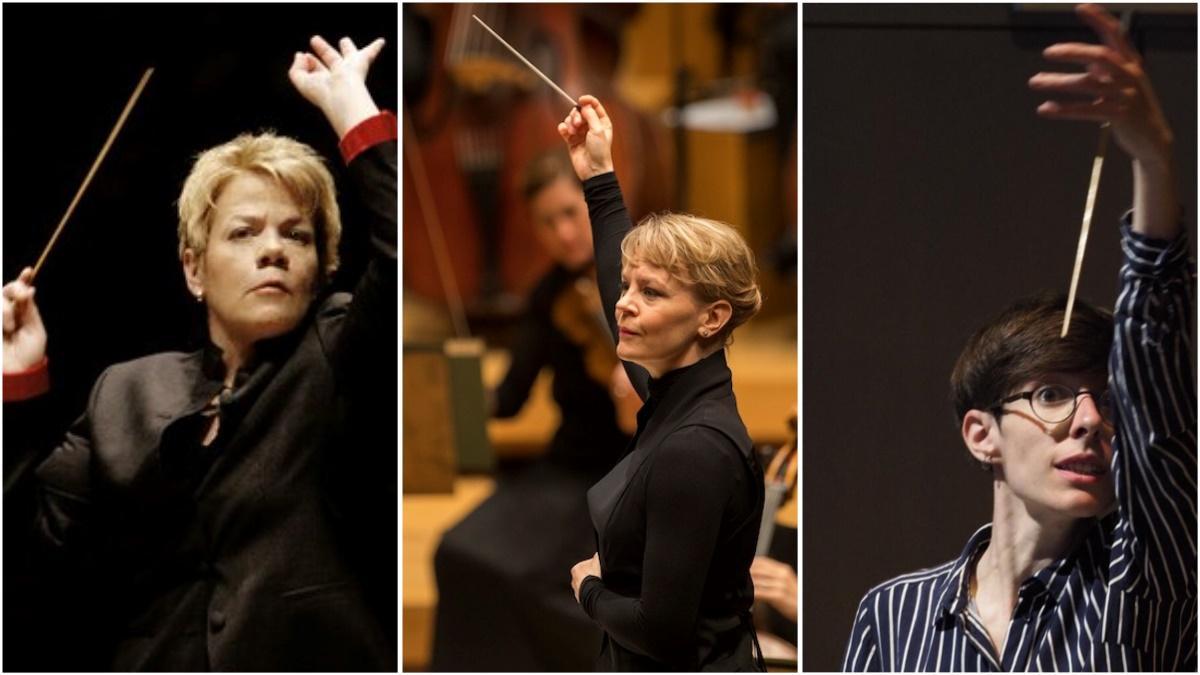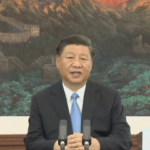
In the world of art, women have historically occupied a residual place. The same thing happens in music, especially in symphonic music. The big and best orchestras made up mainly of men have shown themselves to be allergic to female conductors and also to the presence of performers of the other sex in their formations.
In the second half of the 20th century, women have been advancing and in the world of classical music, more and more female directors are making their way. Marin Alsop, Susana Mälkki -who recently embroidered ‘Il trittico’ at the Liceu-, Simone Young -who has directed the OBC- and other conductors such as Annu Tali, Mirga Grazinyte-Tila, Alondra de la Parra, Joana Mallwitz or the Spanish Inma Shara, among others, have shown that gender has no influence when it comes to interpreting a score and getting its message across to the public.
However, no matter how much women advance on the podium, the New Year’s Concert of the Vienna Philharmonic, which is broadcast every January 1 to a lot of countries, is a closed field for them. Those in charge of the orchestra allege that the responsibility is such that it implies that the musicians need a minimum of 10 years of relationship with whoever is going to direct them.
“If the main criteria is that the conductor has a long-term relationship with the orchestra, and the orchestra never hires female guest conductors… the result is predetermined by the institution itself, not by the talent and ability of my wonderful female colleagues!” says Marin Alsop, an American conductor with an impressive resume who has made her debut as principal of the Vienna Radio Symphony, the first female conductor in its history.
In the documentary about his life ‘The conductor’ it is clear that the podium is not an exclusive terrain for men. However, in the 84 editions of the traditional waltz concert since the Musikverein, never has a female conductor led the baton.
Among her current disciples is a Spaniard, Irene Delgado Jiménez, who enjoys a Taki Alsop scholarship promoted to help future directors fulfill their dream. Now no one can tell a girl that she can’t conduct an orchestra, but there are still many more difficulties they face in a world traditionally dominated by men where they are a minority.
break the curse
“Less than 10% of directors are women,” recalls Delgado-Jiménez. And in the top orchestras, very few. “Traditionally they have held leadership positions. When I entered ESMUC they greeted me saying: ‘You have broken the curse.’ I was the first to study conducting there,” she explains. Delgado-Jiménez is currently in Vienna honing her knowledge, working as an assistant to Marin Alsop at the Vienna Radio Symphony, whose concerts take place at the Musikverein and the Konzerthaus.
“The Viennese are very conservative, I was afraid that Marin’s first concert with difficult music of the 20th and 21st century would not fill up. But it did and it was a party,” he recalls. He is hopeful that he can develop his future in music. “There is no single recipe for directing. Each person is different. The important thing is to have something to contribute to the music and communicate it with respect but without it eating you up,” says the 32-year-old director from Algeciras.
Many women in the art world have been left out. “How many things have we lost because of machismo? Antonia Brico, a conductor that Sibelius adored, was never able to record the composer’s work. What a pity!”, highlights the young Andalusian baton regarding the teacher in which she based on the film ‘The orchestra director’. Neither, despite the good reviews obtained from the best orchestras in Europe, did he manage to become the owner of a group in his country and in 1935 he presented his own orchestra, the New York Women’s Symphony, which had the support of Eleanor Roosevelt, first lady. of the USA and the mayor of New York. “Today there are great female directors. You just have to let them shine.” And that is not easy. First division orchestras don’t usually give many opportunities. Only four of the 129 professional orchestras in Germany are conducted by women.
huge difference
For David Albet, coordinator of the Instrumental Departments of the Esmuc, the Superior School of Music of Catalonia, the scarcity in the number of female conductors leading orchestras is inexplicable. “The OBC has been putting the batteries and every time invites more directors. However, his last bet as headline has returned to be a man.” Of course, it has Marta Gardolińska as the main guest director starting this season.
Musical direction involves dealing with a lot of egos and empathy is essential. It is a mutual collaboration that is established with the musicians but the one that sets the tone is the baton. “Before, most girls wanted to be a choir director. But this has changed radically. The panorama for directors is better today than years ago. There is more than before and progress has been made, but it is not enough. There is still a certain fear of letting a woman lead an orchestra”.
Related news
Men continue to be the majority in management studies. At Esmuc from the 2004-05 academic year to date, six choir directors have graduated compared to 23 directors. In orchestra conducting, the difference is even greater: five graduates compared to 36 graduates.
In April, Irene Delgado Jiménez will conduct the ‘Oratorio Isacco’ by Marian von Martínez, an 18th century composer of Spanish origin and a disciple of Haydn, at the Palau de la Música with groups from Esmuc. “We have done a lot of recovery work. It is a work from 1781 that is worth rediscovering and we will present it semi-staged”, comments the director, wanting to shine in this concert. And in many more.
Source: www.elperiodico.com

